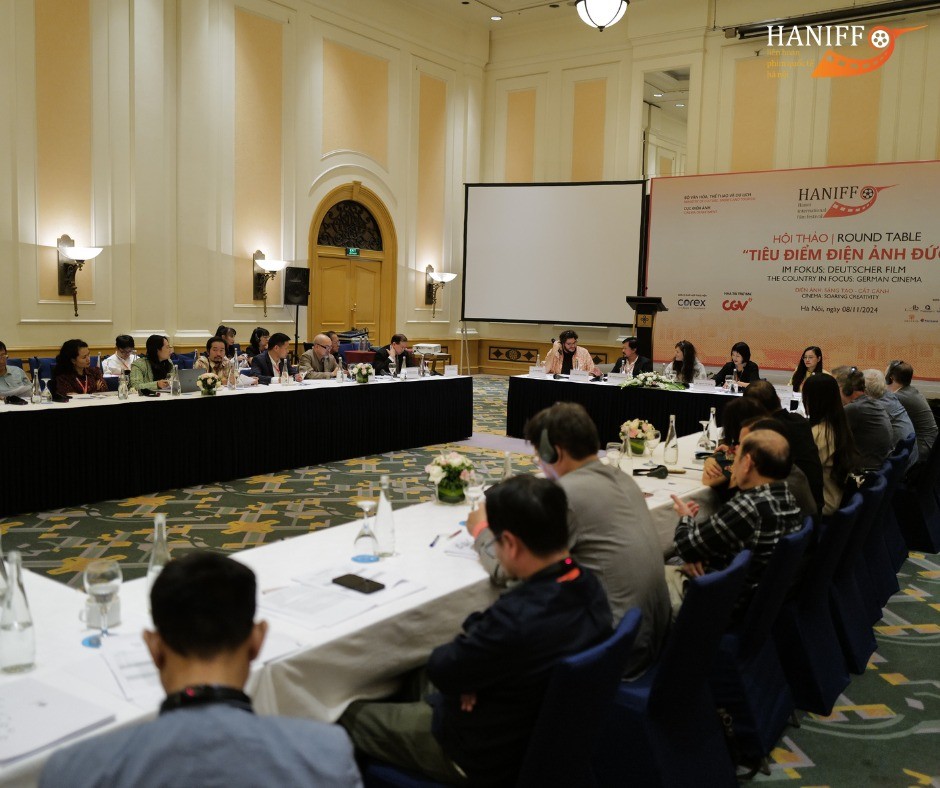Top 10 Most Beautiful Castles in Germany
Picking the most beautiful castles in Germany out of the 20,000 palaces, forts and manors dotting the country was not an easy task. With over 2,000 years of history, Germany obviously had plenty of time to build castles. The oldest in the country is Meersburg Castle, it was built during the 7th century.
Many of the must-see German castles and palaces listed below were built or renovated during the 18th and 19th centuries. Most of them have that distinctive fairy-tale design that inspired Walt Disney. Whether they’re Romanesque, Baroque, Renaissance and even Rococo, German castles have a strong romantic vibe.
Take a look at 10 of the most beautiful and fascinating of these spectacular structures.
1. Neuschwanstein Castle
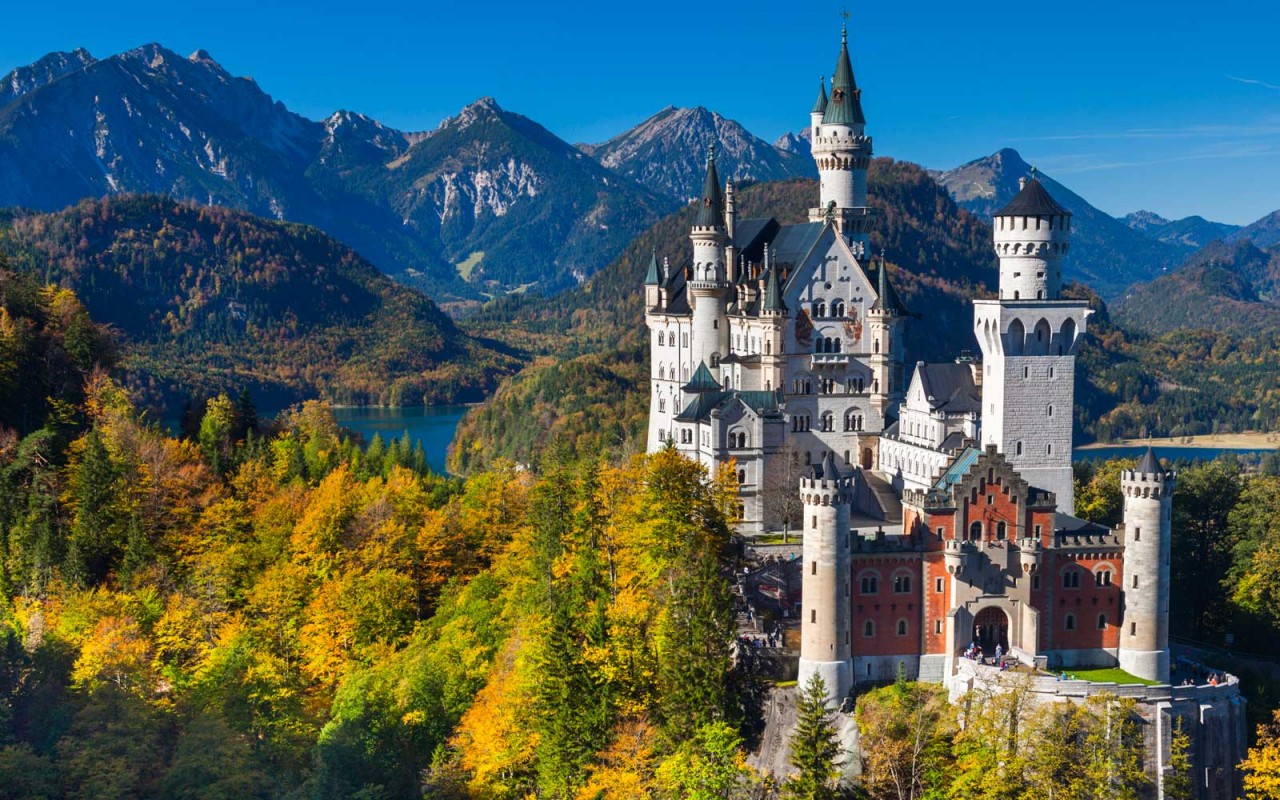 |
| Photo: Travel + Leisure |
Neuschwanstein Castle, German Schloss Neuschwanstein, elaborate castle near Füssen, Germany, built atop a rock ledge over the Pöllat Gorge in the Bavarian Alps by order of Bavaria’s King Louis II (“Mad King Ludwig”). Construction began in 1868 and was never completed.
Louis II spent much of his childhood at Hohenschwangau Castle, a neo-Gothic, medieval-inspired castle elaborately decorated with scenes from legend and poetry. After his accession to the throne in 1864, Louis set out to build a “New Hohenschwangau Castle”—as Neuschwanstein was called until after his death—which he intended to be an even better reproduction of a medieval-style castle in line with his fairy-tale vision of monarchy. The Romanesque designs were drawn by scene painter Christian Jank, and these were translated into architectural plans by Eduard Riedel. In 1874 Riedel was succeeded as chief architect by Georg von Dollmann, who in turn was succeeded by Julius Hofmann in 1886.
Neuschwanstein stands on the site of two smaller castles, the ruins of which were cleared away in 1868. The foundation stone for Neuschwanstein was laid in September 1869. Although Louis expected the entire project to be completed within three years, only the gateway building was inhabitable by 1873. The topping-out ceremony was held on January 29, 1880, but even then the castle was still under construction. The technical fittings were completed some four and a half years later, and the castle remained incomplete in 1886, when Louis died by drowning himself. He had lived there, off and on, only some six months in total. Several weeks after his passing, the unfinished castle was opened to the public as a museum. Simplified versions of the castle’s bower and square tower were not completed until 1892, and only about a dozen rooms were ever finished.
2. Wartburg Castle
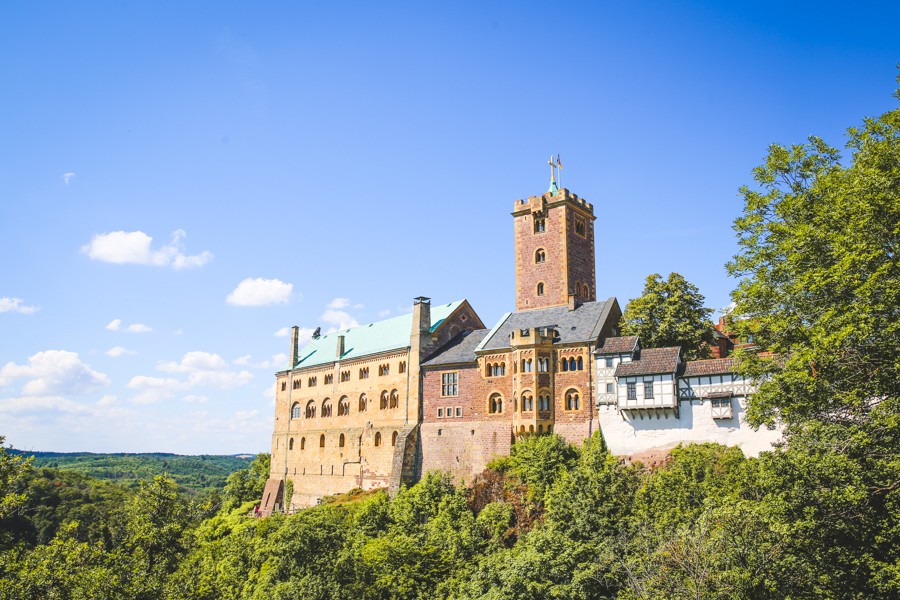 |
| Photo: Laure Wanders |
Wartburg represents the claims to power and the self-assurance of the medieval landgraves of Thuringia.
During 1211 and 1227, Wartburg castle was the home of St Elisabeth of Hungary, wife of the Landgrave Ludwig IV. In 1262 the castle passed to the House of Wettin, and it belonged to the Electors of Saxony from 1423 to 1547. Martin Luther lived there from 1521 to 1522, translating the New Testament into German. In 1741 the castle came into the ownership of the Dukes of Saxe-Weimar and became a symbol of German history and culture, inspiring the work of Goethe, Liszt and Wagner. The Wartburgfest of German student fraternities took place there in 1817.
Founded by Ludwig der Springer, the Wartburg Castle is first mentioned in 1080. Ludwig III (1172–1190) built the Landgrave’s House and the residential quarters of the castle. In 1317 or 1318 a fire seriously damaged the keep, the Landgrave’s House and Heated Chamber. The chapel was built on the first floor of the Landgrave’s House in 1320. Between 1450 and 1500 defensive passages were built on the surrounding walls, and all the buildings were plastered. Much building activity is recorded between 1549 and 1630, but in the 17th and 18th centuries buildings fell into ruin and were demolished.
Schloss Wartburg was renovated between 1838 and 1890 by Grand Duke Charles Alexander of Saxe-Weimar (1853–1901); Moritz von Schwind decorated the residence with frescoes of the legendary song contest, depicting episodes from the history of the Thuringian landgraves and scenes from the life of St Elisabeth. Between 1902 and 1906 the Elisabeth Chamber was decorated with mosaics. The castle was extensively restored from 1952 to 1966 and became a national monument.
The castle, built on a hill, the Wartberg, was designed to control the royal road between Frankfurt am Main and Breslau (now Wrocław, Poland). It is built of sandstone and tufa, on a 140 m long plateau. Its inner and outer baileys are separated by a ditch. The outer bailey is approached from an earthwork, across a drawbridge and through a gatehouse in the old north tower. It is bounded to the east by the curtain wall with its defensive passage, the Elisabeth Gallery.
Adjoining the gatehouse on the west are the Knight’s House, the Governor’s House (containing the Luther Room and the Nuremberg oriel window added in 1872), the Margarethe Gallery and the Heated Chamber. A gatehouse between the Heated Chamber and the New Chamber separates the outer bailey from the inner bailey. On the east side of the inner bailey are the New Chamber and the keep (built in 1859 to replace the one demolished in 1790), the new staircase, the Landgrave’s House and the Knights’ Bath. On the west side stands the Gadem(hut), which once served as stables, arsenal and brewhouse. In between is the well. The southern end is protected by the south tower.
3. Glücksburg Castle
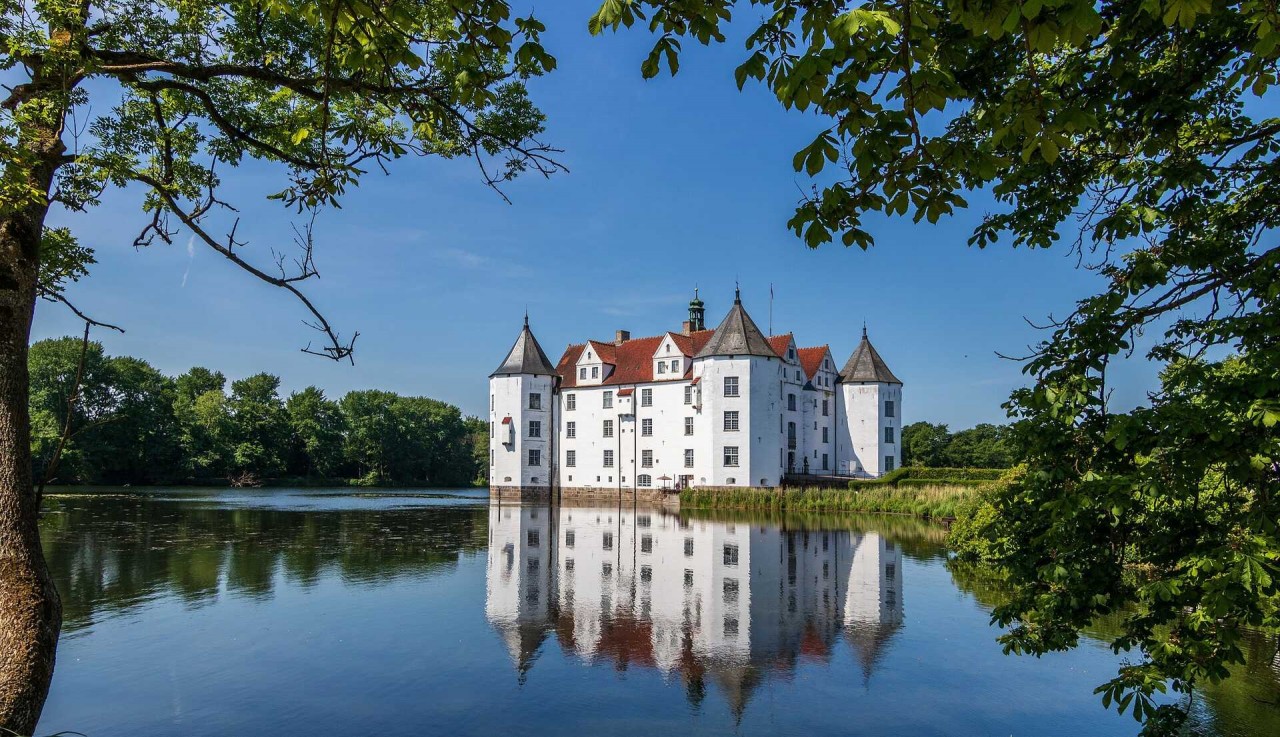 |
| Photo: Fotocommunity |
Glücksburg Castle is one of the most important Renaissance castles in northern Europe. It is the seat of the House of Schleswig-Holstein-Sonderburg-Glücksburg and was also used by the Danish kings. Situated on the Flensburg Fjord the castle is now a museum owned by a foundation, and is no longer inhabited by the ducal family.
The castle was built from 1582 to 1587 by Nikolaus Karie for John II, Duke of Schleswig-Holstein-Sonderburg, (1545-1622) at the site of an former monastery, the building material was partly reused in the castle. The grounds of the monastery were then flooded to create a large pond almost entirely surrounding the castle.
The castle is built on a 2.5 metres high granite foundation that emerges from the water. The bricks used for the construction were mainly taken from the demolished monastery. The base area is a square with sides of nearly 30 metres, consisting of three separate houses with their own roofs. While the great halls and the vestibule are situated in the middle house, the living space is in the two side houses. The chapel is the only room that is part of two houses.
The building had typical renaissance adornments, that were removed in the 19th century, otherwise the exterior has remained more or less unchanged for over 400 years.
The kitchen garden created in 1622 was the castles only garden until the eighteenth century, as the old monastery garden was lost with the construction of the pond, that was built as defence structure, but also used for fishing. Between 1706 and 1709 a small pleasure garden was created in the area of today's rose garden. From 1733 on, a baroque garden was laid out in the main park in front of the outer buildings, where an orangery was constructed in 1743.
In the twentieth century, the formal gardens were remodelled into English landscape parks, though the sections of the older garden remain. The orangery was renovated in 1827 into a neoclassic building, and is now used for art expositions and concerts.
4. Schwerin Castle
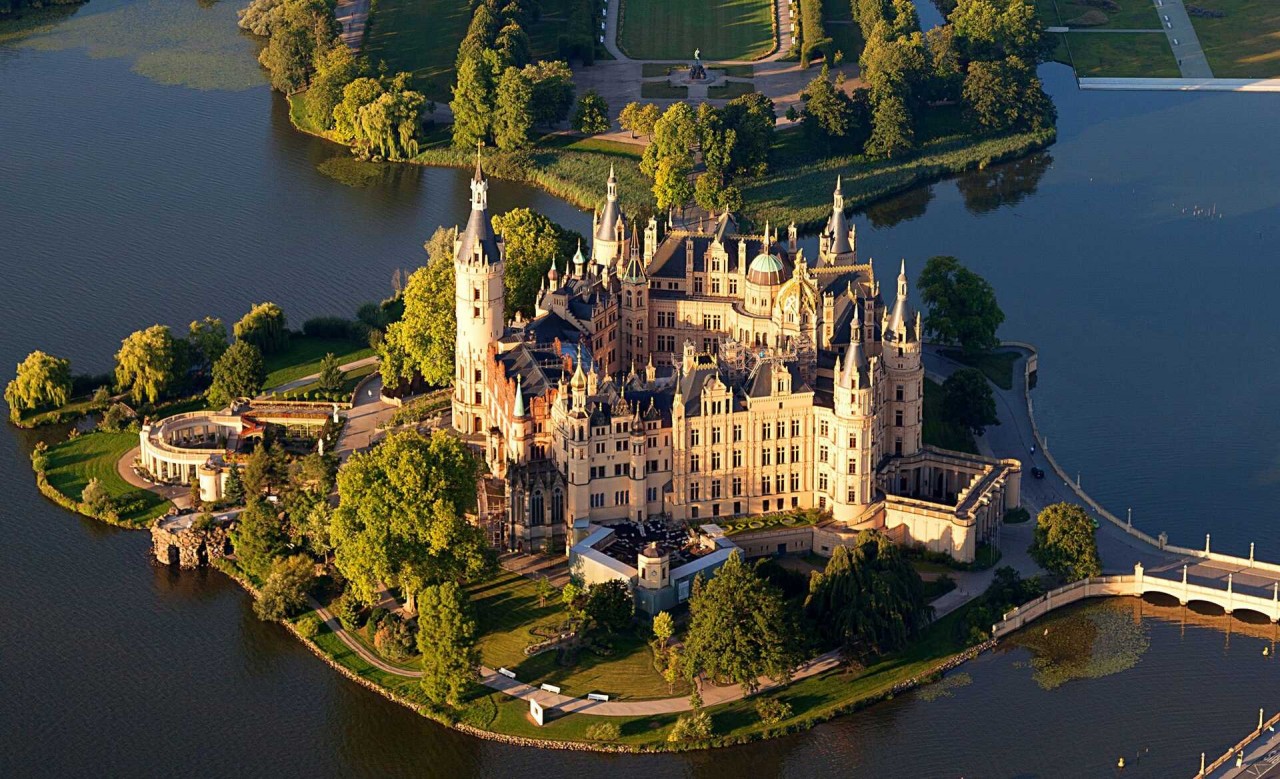 |
| Photo: Wikipedia |
Surrounded by a wonderful landscape composed of lakes and forests Schwerin Castle looks like a fairy tale castle come true. It is the landmark for the town of Schwerin and even more for the whole of Mecklenburg-Vorpommern. Until about 100 years ago it has been the ducal residence of the Grandduke of Mecklenburg-Schwerin. Today it is still the center of power in Mecklenburg-Vorpommern, because it is the seat of parliament. You can visit the museum at Schwerin Castle.
Major parts of the current castle were built between 1845 and 1857, as a cooperation of the renowned historicist architects Gottfried Semper, Friedrich August Stüler, Georg Adolf Demmler and Ernst Friedrich Zwirner. The castle is regarded as one of the most important works of romantic Historicism in Europe and is designated to become a World Heritage Site. It is nicknamed the "Neuschwanstein of the North".
A stroll along the paths of the garden shows the mastery of the garden architects Klett and Lenné. In summer (April - October) there is a Café the orangery directly at the base of the main tower. In Winter (November - March) you can eat and drink at the Schlosscafé inside of Schwerin Castle.
5. Hohenzollern Castle
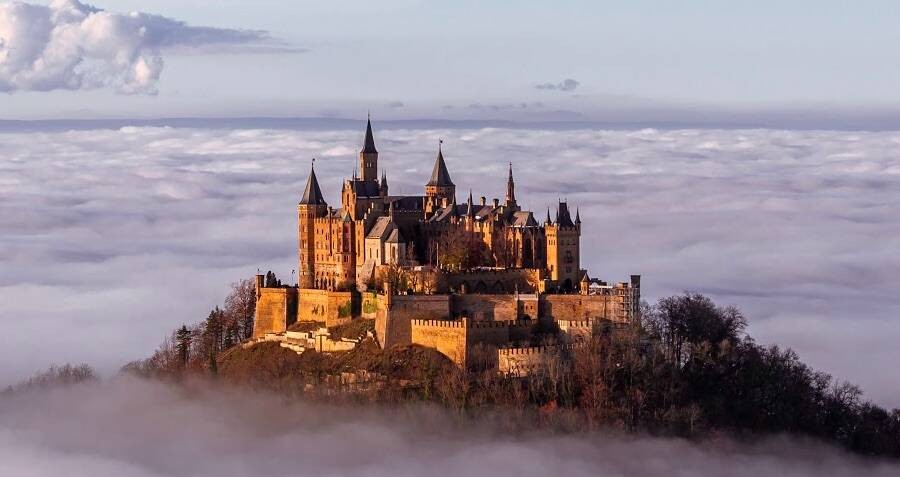 |
| Photo: All That's Interesting |
Hohenzollern Castle – the ancestral seat of the Prussian King and Princes of Hohenzollern – stands proudly almost 900 metres above the Swabian Jura, fortified with towers and battlements.
Something of a Romanticist on the throne, King Frederick William IV of Prussia had a love of the fine arts and a poetically sentimental attachment to the Middle Ages. And that's probably why he commissioned Friedrich August Stüler, a top architect in Berlin at the time, to reconstruct the ruins of his ancestors' castle. He brought the overriding ideal vision of a medieval knight's castle to life – it may have been a bit behind the times but it is still stunning and overwhelmingly beautiful to this day.
The cornerstone was laid in 1852 and the reconstruction project was finally completed in 1867. The castle has 140 rooms in total, with highlights including the library with its incredible murals, the King's bed chamber, a family tree room and the Queen's room known as the Blue Salon. The interior design is splendid with its gilded coffered ceiling, stunning marquetry flooring and portraits of Prussian royals. And for anyone who isn't so bothered about monarchy ideals, the castle's own brewery makes its own beer called PREUSSENS.
6. Wernigerode Castle
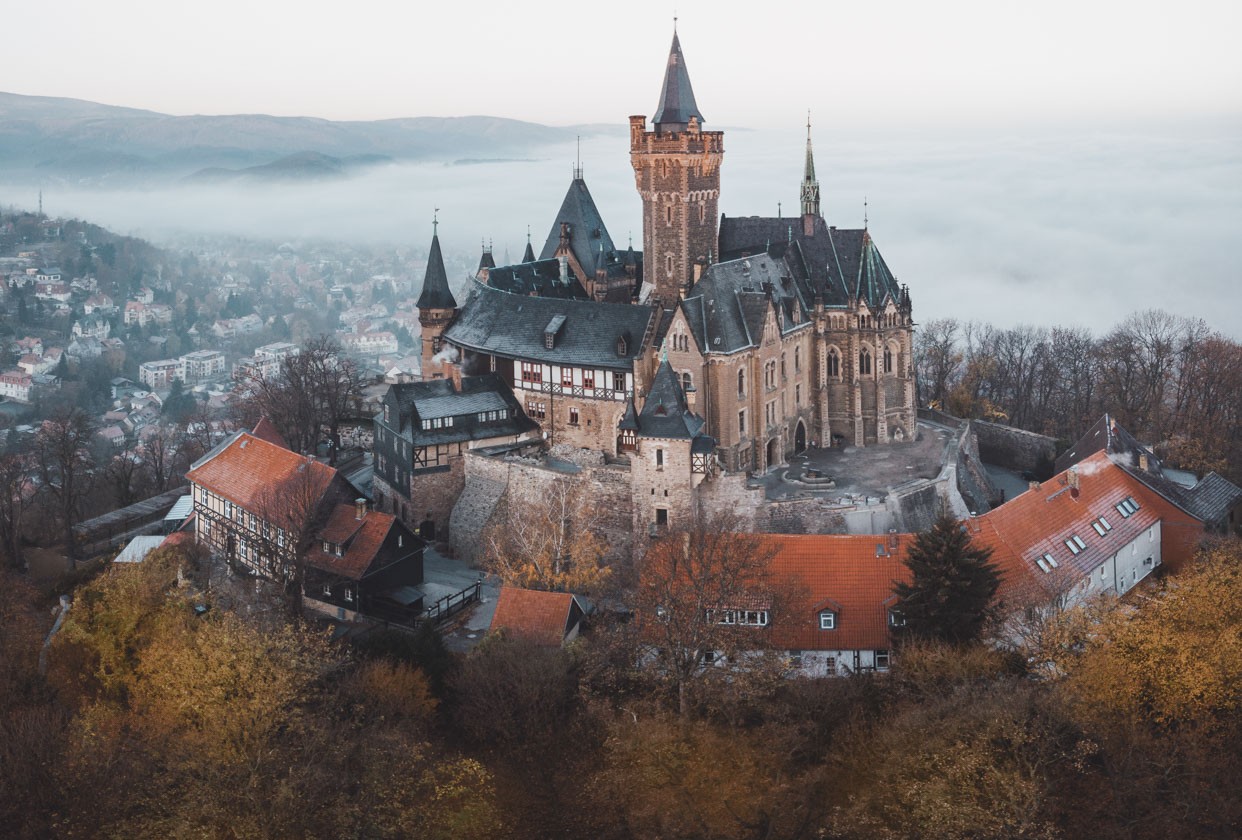 |
| Photo: Explorest |
Wernigerode Castle (Schloss Wernigerode) is a stunning sight that may make some feel as if they have been transported into a fairy tale world. With the spectacular backdrop of the Harz Mountains, Schloss Wernigerode is a German castle that’s not to be missed.
This 12th century Romanesque-style castle was originally used as a hunting lodge for the old emperors of Germany. Wernigerode Castle has had an identity crisis of architectural styles during its long history.
In the 15th century, large arched windows showed off its Neo-Gothic flair. By the 16th century, Schloss Wernigerode had morphed into a Renaissance fortress, until the ravages of the Thirty Years’ War damaged much of it. In the 18th century, Schloss Wernigerode was trying on another architectural style, this time as a Baroque masterpiece.
However, this wasn’t to last very long either. A new ruler in the 19th century, Count Otto, rebuilt portions of the castle in the Neo-Romantic Gründerzeit style.
What we see today is an elegant smorgasbord of architectural designs.
The castle has been open to visitors since 1930.
7. Zwinger Castle
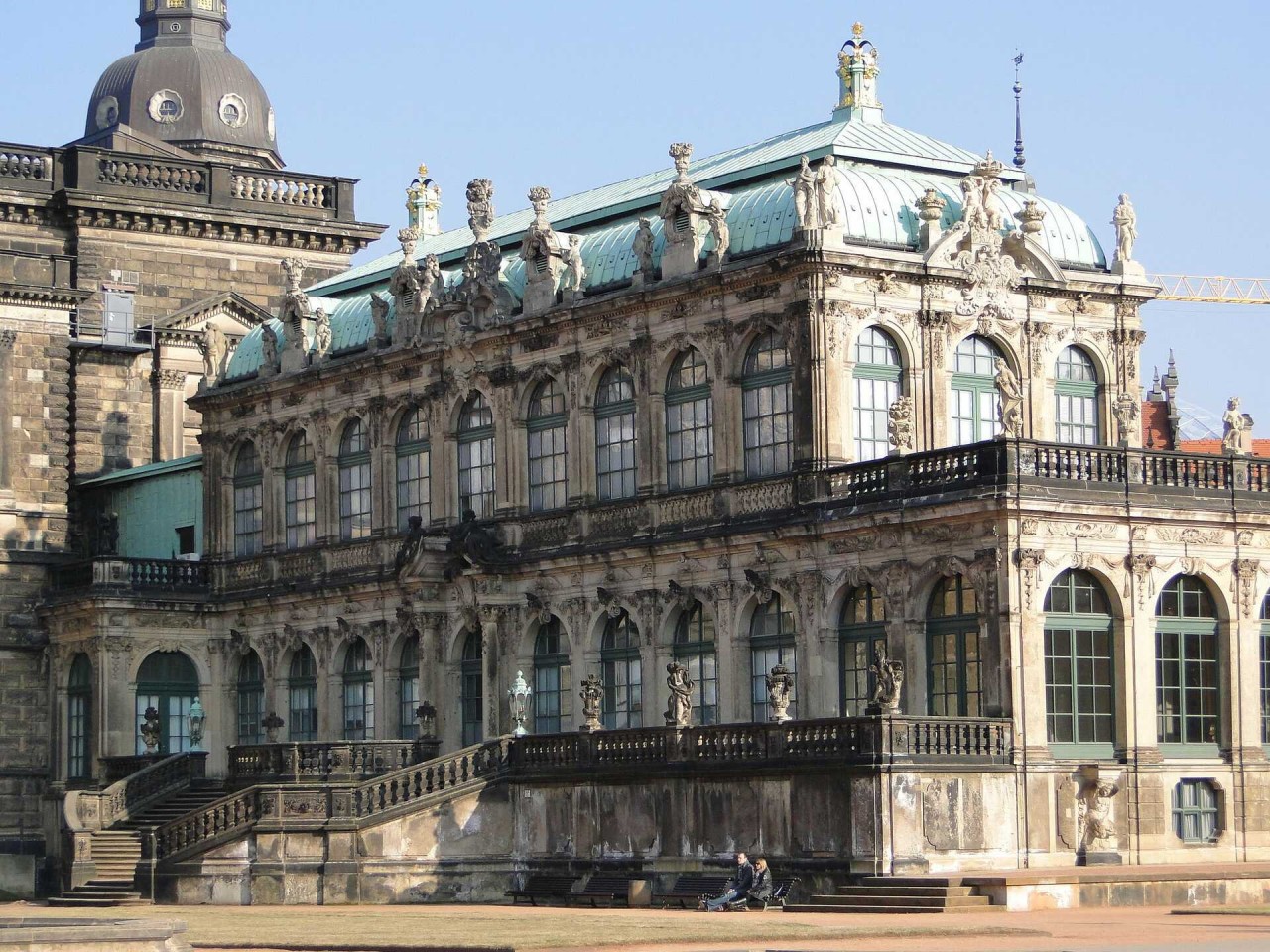 |
| Photo: Culture Trip |
The Zwinger Palace is Frederick-Augustus I’s grand and ambitious project. The palace is located in Dresden, Germany.
It is a large open square (116×107 m with apses 47.5 m deep added to the shorter sides), framed by galleries and pavilions. The architect was Matthäus Daniel Pöppelmann in close collaboration with the sculptor Balthasar Permoser. It was started as an orangery, soon enlarged to serve for court festivities, and eventually converted to a museum. Its name is derived from its position in a corner of a bastion, between the inner and outer city walls.
Its modest beginning was as a new garden laid out in 1709 to a sketch plan by the Elector himself: a series of U-shaped terraces with stairs at the apex to connect the different levels on which orange trees were displayed.
The terraces were built over with arcaded galleries after 1711, and the addition of lateral pavilions gave its plan the form of an omega. The ground floor of the south pavilion was furnished as a grotto, and a nymphaeum was installed behind the north pavilion with a cascade and stairs from the bastion’s upper level. Niches on two sides held over life-size figures of nymphs by Permoser and his workshop.
As part of a plan to enlarge the Schloss Zwinger and give the area to its west a regular scheme, a long gallery of 31 bays was added at right angles to the south pavilion in 1714–1718. The two-storey gateway at the centre, the Kronentor, was loosely derived from triumphal arches and surmounted by a bulbous dome. In 1716–1718 the Wallpavillon was added over the stairs midway along the curved galleries. At the same time frescoes were painted on the ceilings of the upper rooms in the side pavilions by Heinrich Fehling (north) and Louis de Silvestre (south).
The pale local sandstone, the roofs painted blue with gilded ornaments, orange trees in painted ceramic pots and water running down the wall fountains all add to the general air of festivity. This is complemented by allusions to the patron, such as the Polish crown on top of the Kronentor, imperial eagles in the frieze of the north pavilion or the figure of Hercules carrying the globe above the Wallpavillon, which refers both to the garden of the Hesperides and to the Elector’s temporary role as Reichsvikar during the interregnum of 1711.
8. Charlottenburg Castle
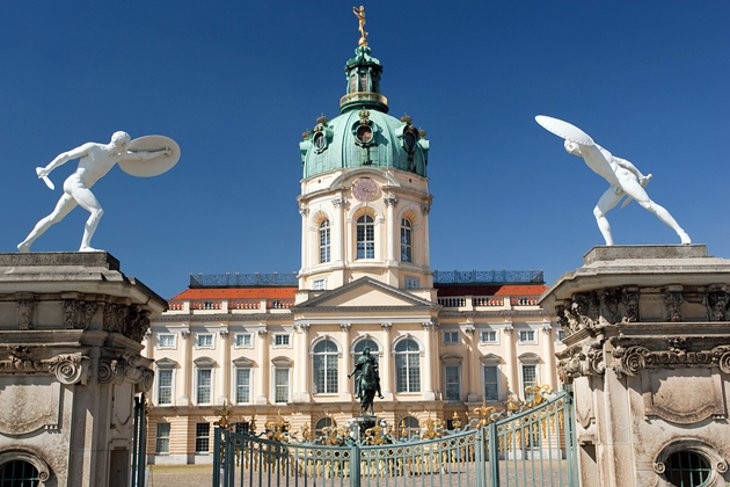 |
| Photo: PlanetWare |
Charlottenburg Palace (Schloss Charlottenburg in German) was extended in 1702, a year after Friedrich crowned himself. He had previously sent the royal architect to study architecture in Italy and France, especially the Château de Versailles. Sophie Charlotte died in 1705 and did not see the finished version of the Palace. In her memory, the King, renamed the mansion Charlottenburg. It had formerly been called Lietzenburg, after the district in which it was constructed.
The British air force bombarded Berlin in 1943, destroying part of the Palace. Some of the building’s decoration could never be fully restored.
Visitors will be accompanied by an audio guide throughout the visit of the Palace to learn about the past and most interesting stories of what happened in each room, transporting tourists to when the royal family enjoyed the residence.
Some of the halls, ceilings and walls preserve the original furniture, decoration and frescoes. Unfortunately, the second floor of the Palace was not as lucky and was badly damaged during World War II, ruining the beautiful decorative elements.
One of the most charming areas of Charlottenburg are the extensive and well cared for gardens designed in 1697 in a French Baroque style and reformed in an English romantic style in 1788. The enclosure was also badly hit during the air raids and were redeveloped in 2001, giving the Gardens a baroque style again.
The gardens of Charlottenburg are a haven of peace in the city of Berlin, in which it is extremely enjoyable to stroll around, resting by its lake or visiting the Belvedere Tea House, dating from 1788.
9. Schloss Nordkirchen Castle
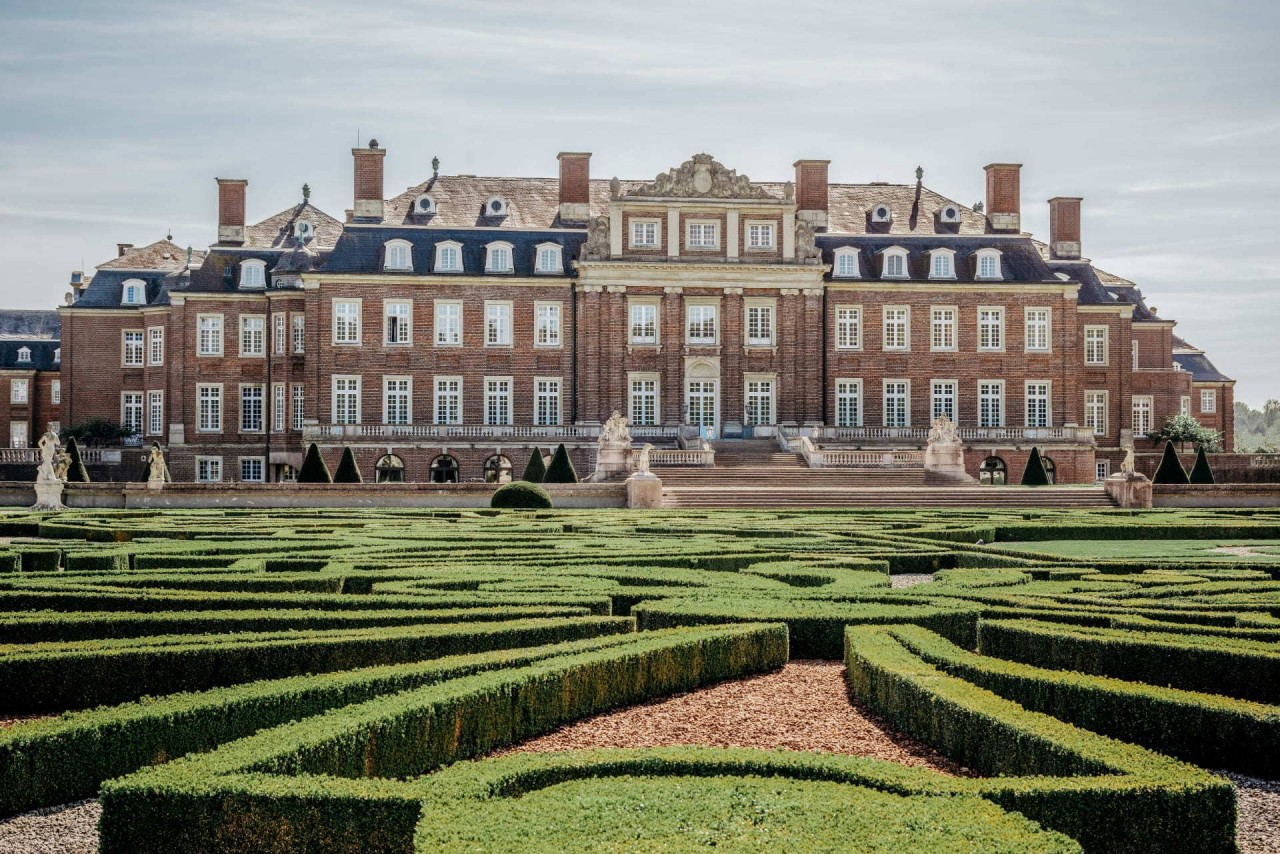 |
| Photo: Münsterland e.V. |
The "Westphalian Versailles", as Nordkirchen Palace is also called, was commissioned by Prince-Bishop Friedrich Christian von Plettenberg. Gottfried Laurenz Pictorius began construction, Johann Conrad Schlaun completed the baroque moated castle after 30 years.
It is situated on an island surrounded by quadrangular moats in the middle of a large park which, like the castle, was laid out according to the French model. The focal point of the imposing Nordkirchen Palace is the main building, the Corps de Logis, from which the lower wing buildings develop and enclose the cour d'honneur in a U-shape. The entire building complex is highly symmetrical and in this form an impressive example of a completely preserved baroque complex.
Today, Nordkirchen Castle is the seat of the NRW University of Applied Sciences for Finance. The castle also houses a restaurant and the castle chapel can be booked for wedding ceremonies.
The 18th-century castle with its spacious park of around 170 hectares has been declared worthy of protection by UNESCO as a "total work of art of international standing". The best way to explore Nordkirchen Castle is to take a walk through the extensive castle park. From many sides, Nordkirchen Castle offers excellent photo motifs for the holiday album. Cyclists have a direct connection to the 100 Castles Route at Nordkirchen Castle.
10. Heidelberg Castle
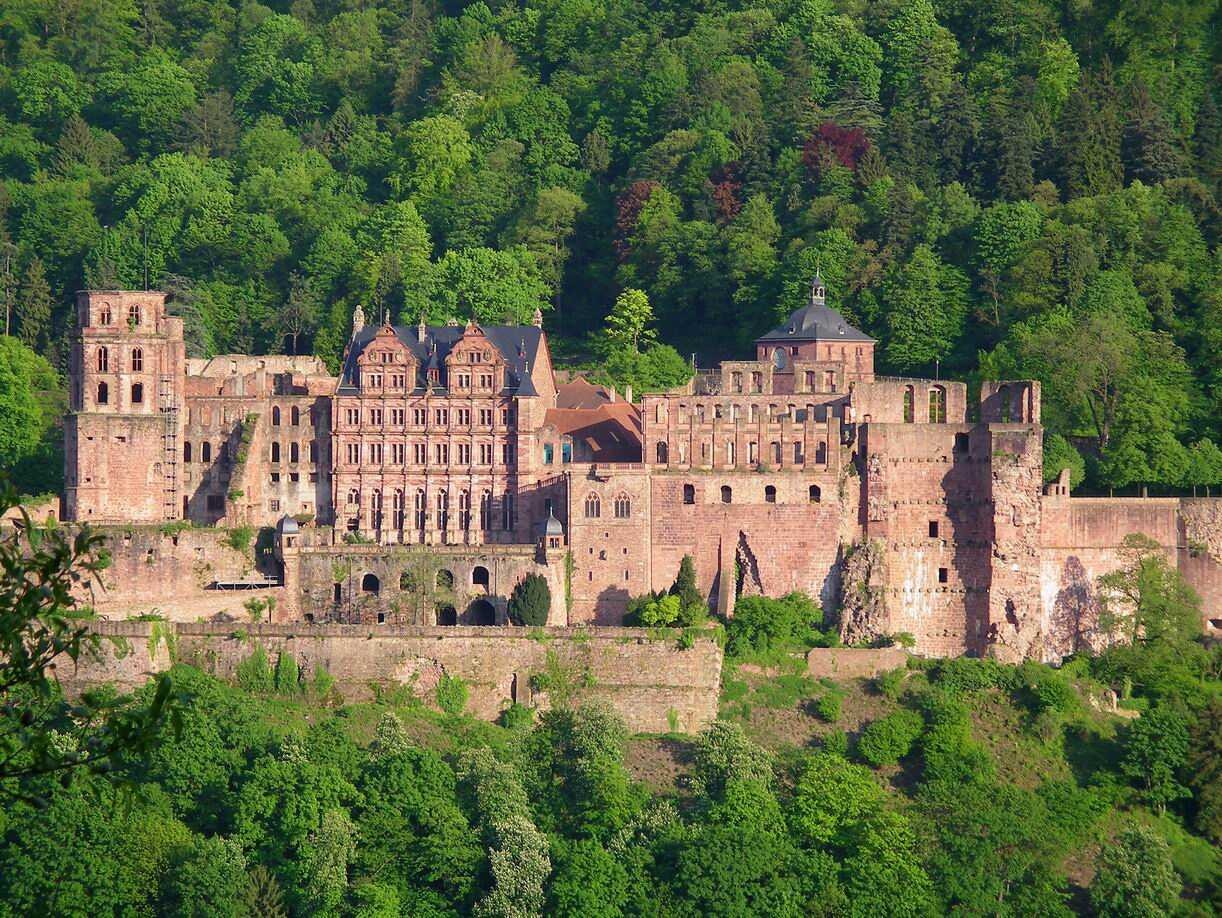 |
| Photo: Wikipedia |
Heidelberg Castle (German: Heidelberger Schloss) is a ruin in Germany and landmark of Heidelberg. The castle ruins are among the most important Renaissance structures north of the Alps.
The castle has only been partially rebuilt since its demolition in the 17th and 18th centuries. It is located 80 metres (260 ft) up the northern part of the Königstuhl hillside, and thereby dominates the view of the old downtown. It is served by an intermediate station on the Heidelberger Bergbahn funicular railway that runs from Heidelberg's Kornmarkt to the summit of the Königstuhl.
The earliest castle structure was built before 1214 and later expanded into two castles circa 1294; however, in 1537, a lightning bolt destroyed the upper castle. The present structures had been expanded by 1650, before damage by later wars and fires. In 1764, another lightning bolt caused a fire which destroyed some rebuilt sections.
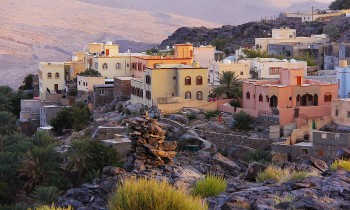 | Discover Interesting Facts About Oman You May Not Know Oman, a small country with beautiful, historic sites and natural wonders, is full of fascinating facts that a lot of people probably do not know. ... |
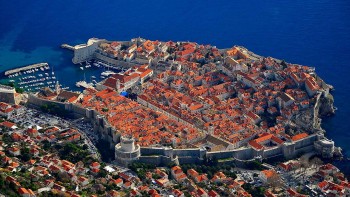 | The Splendor Beauty of Dubrovnik – “The Jewel in the Adriatic Sea” Dubrovnik, located in Croatia, is a famous tourist destination with its beautiful sandy beaches, walls and forts, and fancy islands that can be a perfect ... |
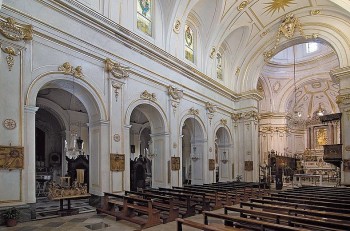 | Visit Monteriggioni – The Medieval Walled Town Nestled in Tuscany Monteriggioni is a Medieval walled town that nestled in the province of Siena in the Italian region of Tuscany, which is a cultural staple of ... |
Recommended
 Travel
Travel
Vietnam Through Australian Eyes: Land of Flavor, Warmth, and Timeless Charm
 Travel
Travel
Strategies for Sustainable Growth of Vietnam’s Tourism from International Markets
 Travel
Travel
Vietnam Strengthens Its Presence On The Global Tourism Map
 Multimedia
Multimedia
Phong Nha-Ke Bang National Park Named Top Adventure Travel Site
Popular article
 Travel
Travel
Vietnam Welcomes Record-High Number of International Visitors
 Travel
Travel
Luxury Train From Hanoi To Hai Phong To Be Launched In May
 Travel
Travel
Phong Nha Named Top Budget-Friendly Travel Destination for Spring 2025: Agoda
 Travel
Travel






